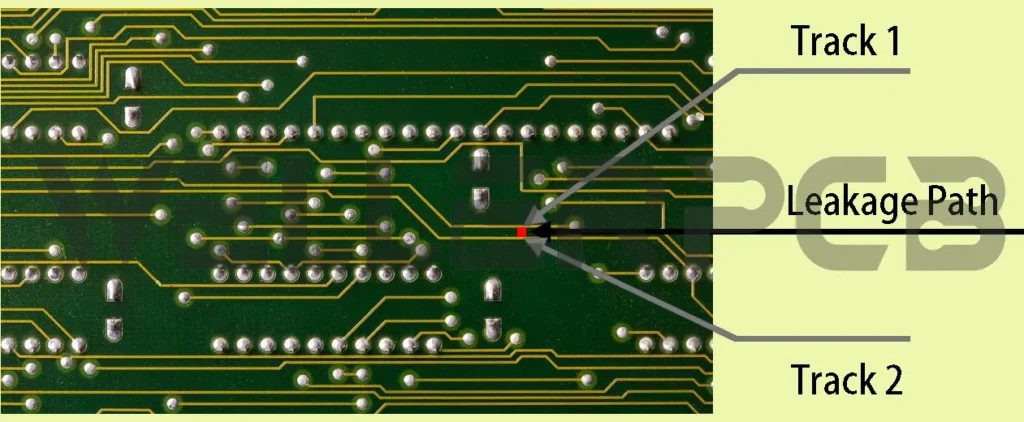The Comparative Tracking Index, commonly known as CTI, is a crucial measurement that determines the electrical breakdown properties of an insulating material used in electronic devices, particularly printed circuit boards (PCBs). It represents the maximum voltage, measured in volts, that a material can withstand before electrical tracking occurs when subjected to contaminated water. Specifically, at the CTI voltage, the material should endure 50 drops of contaminant without exhibiting tracking.
Tracking refers to the formation of conductive paths, often described as PCB current leakage paths, on the surface of an insulating material. These paths develop due to a combination of factors including heat, electrical stress, humidity, and contamination. Consequently, CTI is also recognized as a measure of PCB leakage current resistance, indicating how well a PCB material prevents unwanted current flow across its surface.
Printed circuit boards, whether rigid or flexible, serve as the foundation for electronic components, providing mechanical support and electrical interconnections. These connections are achieved through conductive pathways, or circuit traces, etched from copper layers laminated onto an insulating substrate. The comparative tracking index is therefore a critical indicator of a printed circuit board material’s ability to insulate and prevent unintended current flow between these circuit traces. In essence, it reflects the tracking resistance offered by the PCB material against surface current leakage. As electronic devices become more compact, component density increases, leading to finer trace spacing on PCBs. This miniaturization amplifies the importance of a high CTI value to maintain electrical insulation and prevent failures.
When designing electronic devices for everyday applications, such as household appliances like washing machines, the CTI value of the PCB base material becomes paramount. For instance, washing machines often require PCB materials with a CTI of 600V or higher to ensure safety and reliability in humid operating environments. The CTI, along with the Proof Tracking Index (PTI), are vital parameters in selecting PCB base materials, as they directly correlate to the PCB’s tracking resistance and the mitigation of potential current leakage risks.
A higher CTI value signifies greater resistance to tracking and superior insulation performance. Standard FR4 material, a common PCB substrate, typically has a CTI value around 175V. However, specialized materials are available that can achieve CTI values up to 600V for applications demanding enhanced insulation. The determination of CTI and PTI values is conducted using standardized testing methods, primarily under the guidelines of IPC-TM-650, ensuring consistent and reliable material assessment for comparative tracking index performance.
